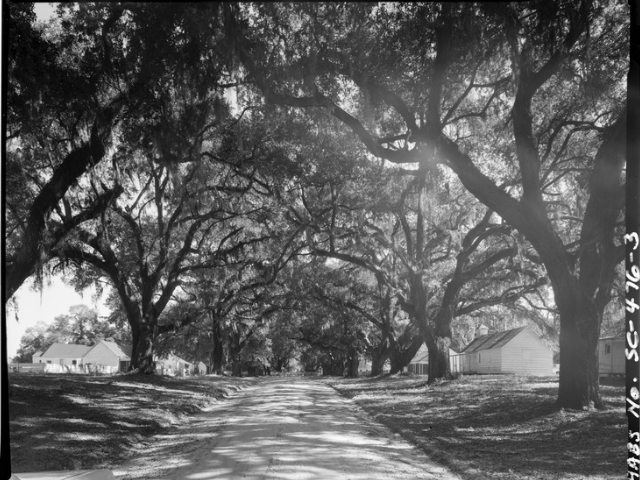
Mansfield Plantation Driveway (n.d.). Wikimedia Commons. Retrieved 15:39 May 26, 2021.
Georgetown County and its county seat, Georgetown, were named for King George II of England. Spanish explorers are believed to have visited this coastal area in 1526, but no permanent settlement was established. English planters and their African slaves moved into the region in the early eighteenth century, building large rice and indigo plantations. The town of Georgetown was established around 1730 and was a busy port serving the surrounding plantations. Georgetown District was first named in 1769, encompassing the parishes of Prince George, All Saints, and Prince Frederick. In 1785 the district was divided into four counties: Liberty (which became Marion District in 1800), Kingston (which became Horry District in 1801), Williamsburg (which became a separate district in 1804), and Winyah (which was renamed Georgetown in 1800). During the Revolutionary War, the troops of General Francis Marion often hid in the swamps of Georgetown County while waging guerrilla warfare against the British. Rice planting declined after the Civil War, and many of the old plantations became wildlife or hunting preserves. Many famous South Carolinians were residents of Georgetown County, including Thomas Lynch, Jr. (1749-1779), a signer of the Declaration of Independence; artist Washington Allston (1779-1843); Theodosia Burr Alston (1783-1813), the daughter of Aaron Burr; Joel Roberts Poinsett (1779-1851), Congressman, secretary of war, and ambassador to Mexico, who introduced the poinsettia to the United States; and Joseph Hayne Rainey (1832-1887), the first African-American elected to the U. S. House of Representatives.


